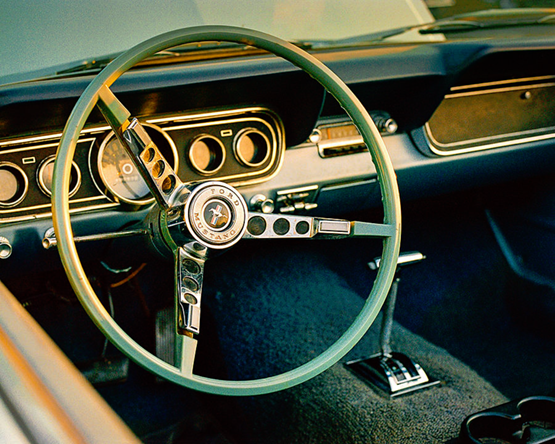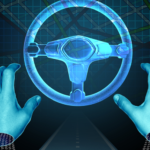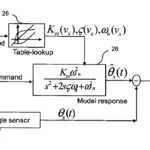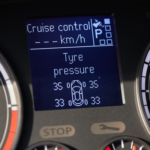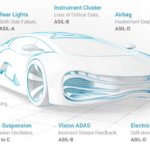Cars with lane-keeping assistance (LKA) also are mandated to have a hands-off detection (HOD) function; there are several ways to meet this challenging requirement.
Today’s cars are packed with all sorts of functions, features, and attributes that didn’t exist – or need to – just a few years ago. Whether for driver and passenger convenience, comfort, safety, fuel economy, or other reasons, there are new operating modes such as stop/start or safety-related functions such as tire pressure monitoring systems (TPMS), to cite just two of these. It also seems that each new feature further brings on the law of unintended consequences, often necessitating yet another function to accommodate or constrain the idiosyncrasies of the first one.
Consider the humble steering wheel, the most visible “control” element in the car. Back in the day, this wheel had one single, simple, obvious function: to control the angle of the car’s front wheels; this soon expanded to just one other function of sounding the car horn…end of story (Figure 1) (top). (Note that the first cars did not have a steering wheel as we know it; they used a tiller similar to the one on a boat.)
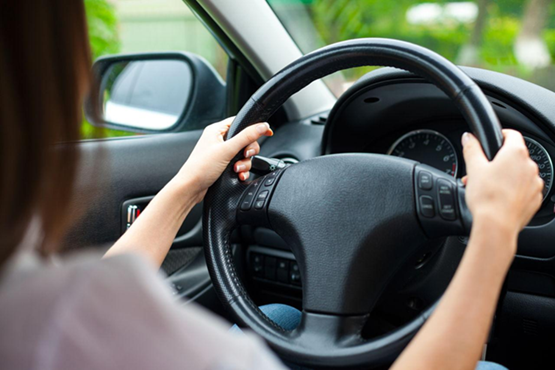
In recent years, however, the steering wheel has taken on many other roles as well, with switches and buttons which change car-operational settings, call up cruise control, operate the radio, and more. All of these clearly go beyond the basic steering function (Figure 1) (bottom).
Perhaps as cars become totally self-directed and autonomous, the steering wheel will become a vestigial organ to some extent with hands-off operation all of the time, or even disappear entirely. The old maxim “keep your hands on the wheel and your eyes on the road” may no longer apply. Despite the many autonomous-vehicle projects, trials, and tests underway, we don’t know when that will happen (it seems to always be “just around the corner”). Until driver-free driving becomes the norm, human drivers need to keep their hands on the wheel.
Or do they? The reality is this: a feature in many new cars called lane-keeping assistance systems (LKA or LKAS) keeps the car in the designated lane, which is presumably a good thing. In fact, the LKAs are now quite impressive and can maintain lane position over a wide variety of road and traffic conditions. The intention of LKA is “assistance,” as the name indicates, as it allows drivers to take their hands off the wheel for a few seconds to as just the jacket, pick something up, or reach into their pocket; it also can help if the driver gets drowsy.
LKA is one of the many driving enhancements which fall under the broad title of advanced driver assistance systems (ADAS). Lane keeping assistance and the need to still keep hands on the wheel are part of the larger picture developed by SAE defining the multiple levels of car control ranging from Level 0 (no automation at all, full driver control needed) to Level 5 (full automation) (Figure 2 and Figure 3).

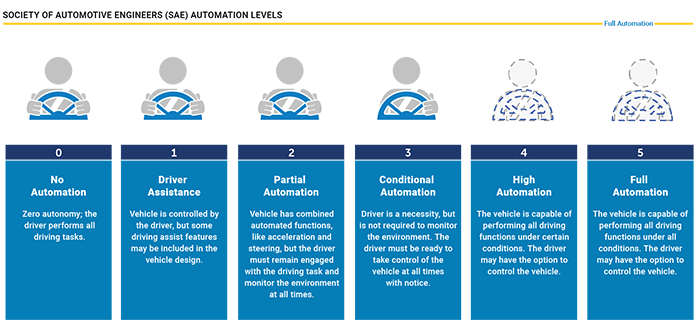
Under this ranking, drivers are supposed to keep their hands on the wheel all the time (Level 0 – no automation), nearly all of the time (Level 1 and 2), nearly all of the time but perhaps not quite as much (Level 3 and 4), and can only totally keep their hands off the steering wheel (assuming there is one) at Level 5 – full automation.
The next part of this article looks at a corollary to LKA, the need for hands-off detection.
Related EE World Content
- The automotive Tire Pressure Monitoring System, Part 1: The situation
- The automotive Tire Pressure Monitoring System, Part 2: Perspectives
- The automotive Tire Pressure Monitoring System, Part 3: Implementation
- The automotive Tire Pressure Monitoring System, Part 4: Issues
- Understanding stop/start automobile-engine design, Part 1: The idea
- Understanding stop/start automobile-engine design, Part 2: The starter motor
- Understanding stop/start automobile-engine design, Part 3: The battery situation
- Understanding stop/start automobile-engine design, Part 4: Mechanical wear issues
- Understanding stop/start automobile-engine design, Part 5: Additional considerations
- Understanding stop/start automobile-engine design, Part 6: Responses and work-arounds
References
- The Wall Street Journal, “Ding. Chirp. Notifications Are Driving Us Crazy.“
- Jeep Garage, “2019 Cherokee Trailhawk Elite hands off steering wheel alerts“
- Driving, “Lorraine Explains: You can take your hands off the wheel — should you?“
- Subaru Outback, “Hands on the steering wheel warning“
- LinkedIn, “Hands-Off Detection (HOD) – crucial for Driver Assistance and Automated Driving Systems” [capacitive overview]
- EE News Automotive, “Hands-off detection ECU for Autonomous Driving Systems” [Alps Alpine capacitive system]
- National Highway Traffic Safety Administration (NHTSA), “Hands Off Detection Requirements for UN R79 Regulated Lane Keeping Assist Systems” [IEE capacitive solution]
- IEE, “Hands Off Detection (HOD) Sensing System” [IEE capacitive solution]
- IEE/YouTube, “EE – Hands Off Detection (HOD) sensing system” [IEE capacitive solution]
- US Patent US7912665B2/General Motors, “Method and apparatus for driver hands off detection for vehicles with active front steering system “[torque-based scheme]
- JTEKT ENGINEERING JOURNAL, “Hands On/Off Detection Based on EPS Sensors” [academic paper on torque system]
- AMS-Osram, “Hands-on detection webinar about capacitive sensor technology” [Quadrature scheme]
- AMS-Osram, “New capacitive sensing technology provides a more reliable and safer hands-on detection” [Quadrature scheme]
- AMS-Osram, “Hands-on Detection” (video)
- AMS-Osram, AS8579 Capacitive Sensor data sheet
- Zoppas Industries, “Steering Wheel Hand Detection Systems” [capacitive sensing plus integral heater]
- Microchip Technology/YouTube, “Steering Wheel Demonstration w/ Capacitive Hands off Detection, Touch Pads and Buttons” [capacitive sensing]
- The National Academies of Sciences, Engineering, and Medicine “Hands Off Detection Requirements for UN R79 Regulated Lane Keeping Assist Systems” [“legal” notice on LKA and HOD]
- IEEE, “Hands on the wheel: a Dataset for Driver Hand Detection and Tracking” [use of infrared imaging of back of driver’s hands]
- United Nations Economic Commission for Europe, “World Forum for the harmonization of vehicle regulations” [Role of UN ECE]

